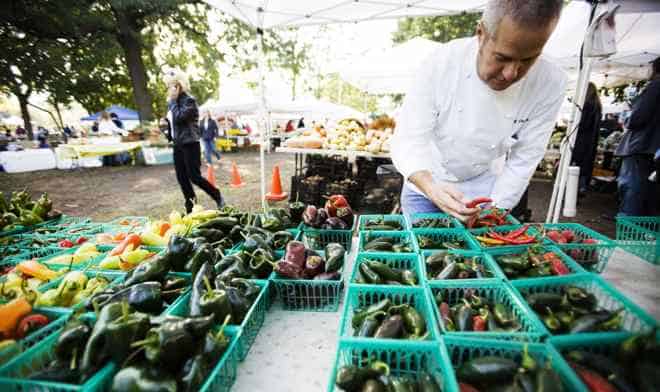Everyone likes to talk about cooking seasonally when there is an abundance of fresh produce at our fingertips (guilty!). In my experiences as a food service consultant, I’ve found that large institutions can always find more ways to source local and cook from scratch—no matter what they are already doing today. And this conversation can endure through the muted winter.
If you are a large institution, I would immediately suggest making your menu smaller. I recently wrote an article about five ways to do that. This will free up the time you need to cook more fresh foods. It will also be necessary to assess the culinary skills of your kitchen, and how fast they move. Many foodservice operations can have an entire staff with no culinary background. Create realistic standards around how much fresh food your team can handle as they get acclimated to new skills.
To start, blend seasonal foods with processed foods so that you are not jumping straight to 100 percent scratch-cooked, local meals. While that sounds great, if you are not ready, your team will not be able to efficiently handle all of the fresh foods and you may create a bunch of waste in the process. One way to inspire staff is to take them to a farmers market on the weekend and build relationships with farmers. Ask someone to talk about their growing process, their products or farm. Storytelling is powerful. You can even ask to schedule an onsite visit to a farm.
Not all customers are used to fresh, seasonal choices. It is also necessary to educate your client base on any seasonal menu changes and share that story. Just like blending seasonal and processed, blend new, seasonal ingredients into tried and true menu items. For example, putting local diced carrots into your meatloaf is not a stretch.
Summer and early fall are the easiest for incorporating fresh, seasonal foods into your dishes. We currently have the most variety and quantity. In turn, fresh foods are more affordable. However, many institutions do not think about buying fresh food now for later. Buy fresh produce now, chop it, freeze it and use it when it is not available in the winter. You can still serve food in the winter that was sourced locally and seasonally at the time it was purchased.
Here are suggested crops for large institutions that are both plentiful and easy to work with:
Summer: corn, tomatoes, ground beef (purchase the entire animal), lettuce, zucchini, strawberries
Fall: hard squash, potatoes, cabbage, sweet potatoes, parsnips















